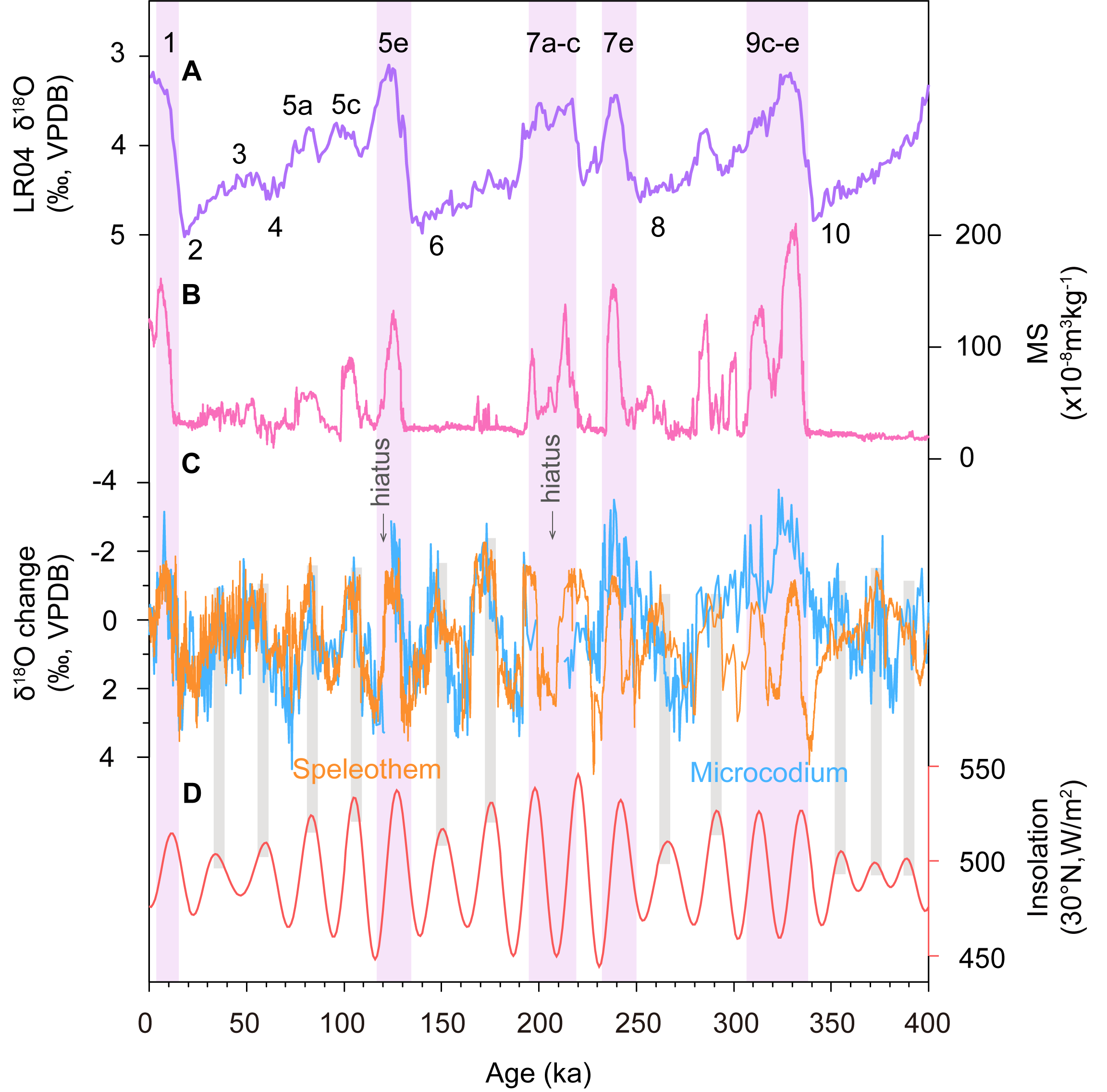
A new study published in Proceedings of the National Academy of Sciences (PNAS) solves a long-standing climate mystery: Why don't the records of oxygen isotopes (δ18O) in cave formations like stalagmites—known as speleothems—from central southern China reflect the well-known 100,000-year cycles of ice ages seen in other global climate records? These speleothem δ18O records have long been considered a key indicator of the strength of the Asian summer monsoon, so their failure to show these major climate shifts has puzzled scientists for decades.
To find an answer, researchers combined geological evidence with advanced climate model simulations. They discovered that the issue lies in how the δ18O signal in speleothems forms.
Meteorological data show that in southern China, less than half of the annual rainfall—and thus the dripwater that forms speleothems—comes from the summer monsoon season (June to August). The rest of the year's precipitation, from autumn, winter, and spring, contributes a larger share, and this nonsummer rainfall has significantly higher δ18O values. That means that speleothem δ18O reflects a mixture of rainfall from all seasons, not just the summer monsoon. Relying on it as a direct measure of summer monsoon strength is therefore misleading.
The key problem has been the lack of independent geological records that capture only the δ18O signal from summer rainfall—without the "seasonal mixing effect." To solve this, researchers from the Institute of Earth Environment at the Chinese Academy of Sciences, in collaboration with international partners, reconstructed a 400,000-year record of summer monsoon δ18O using a novel proxy: the δ18O of microcodium, microscopic carbonate particles formed when plant root cells calcify in Chinese loess deposits, mostly during the summer.
The new microcodium record and the traditional speleothem δ18O records both show 23,000-year variations. But only the microcodium record shows notably low δ18O values during peak interglacial periods, which correspond with strong summer monsoons. This clearly captures the 100,000-year glacial–interglacial cycles that are absent in the speleothem δ18O records from central southern China.
This shows that the speleothem δ18O records from central southern China reflect precipitation signals from multiple seasons, rather than exclusively summer precipitation. Acknowledging this seasonal "mixing effect" represents a significant shift in how speleothem δ18O records are interpreted.
Climate models support this explanation. They show that during peak interglacial periods with strong summer monsoons, when summer rainfall δ18O becomes more negative (indicating a stronger monsoon), the majority of the annual rain comes from nonsummer months—up to 60% or more. This diminishes the prominence of summer signals in speleothem δ18O records and explains the lack of significant negative δ18O excursions during peak interglacial periods, ultimately masking the 100,000-year cycles.
This finding not only resolves a long-standing mystery concerning the interpretation of East Asian speleothem δ18O records but also emphasizes the critical role of seasonality in understanding natural climate archives. It paves the way for reexamining the climatic significance of δ18O signals in speleothems—not just in East Asia but globally.
The research was jointly supported by the National Natural Science Foundation of China and Laoshan Laboratory, among other partners.

Comparison of records over the past 400,000 years. (A) Marine benthic foraminifera δ¹⁸O (Lisiecki and Raymo, 2005); (B) Loess magnetic susceptibility (Sun et al., 2021); (C) Microcodium δ¹⁸O record and speleothem δ¹⁸O record (Cheng et al., 2016); (D) Summer insolation at 30°N (Laskar et al., 2004). (Image by ZHANG Zeke, et al)

86-10-68597521 (day)
86-10-68597289 (night)

52 Sanlihe Rd., Xicheng District,
Beijing, China (100864)

